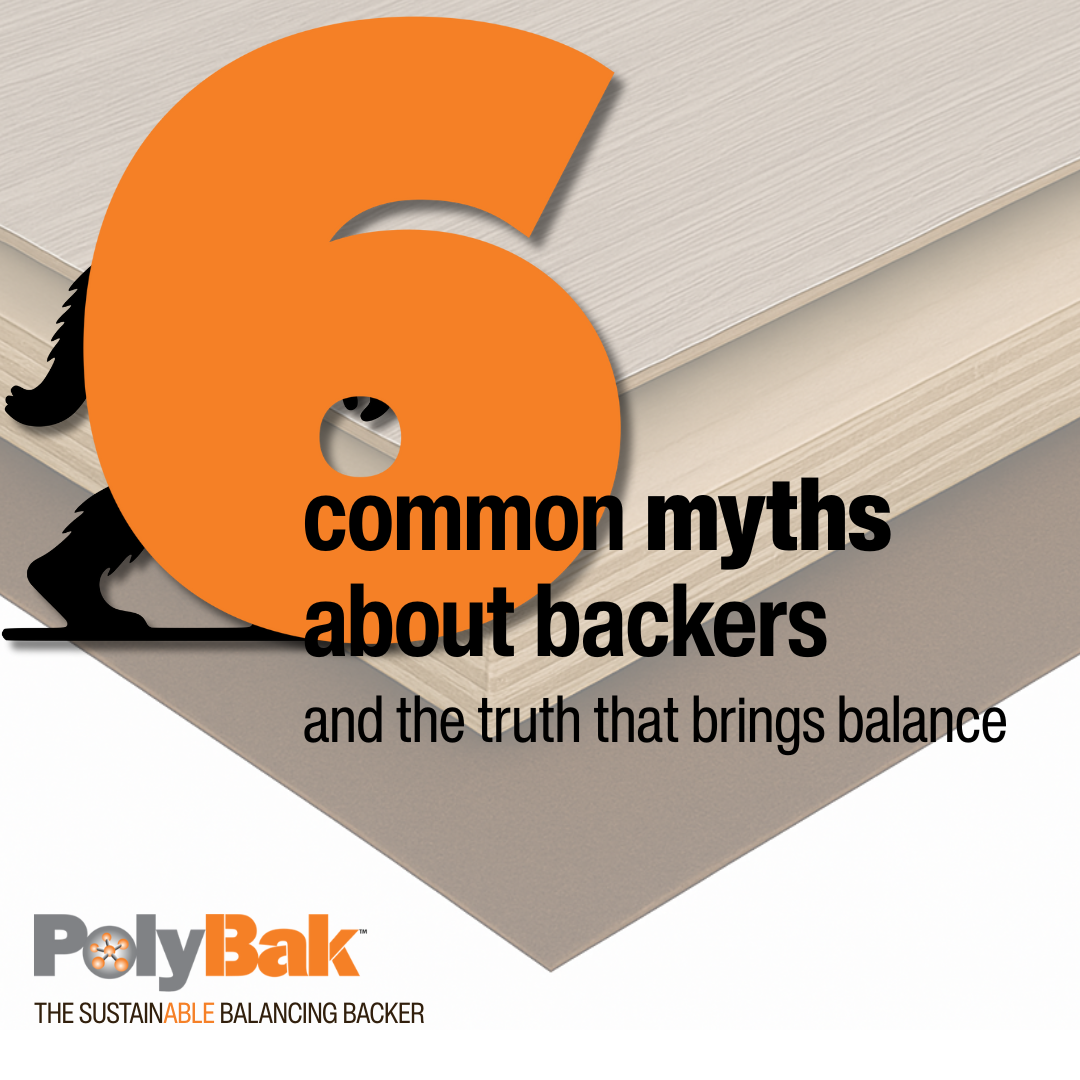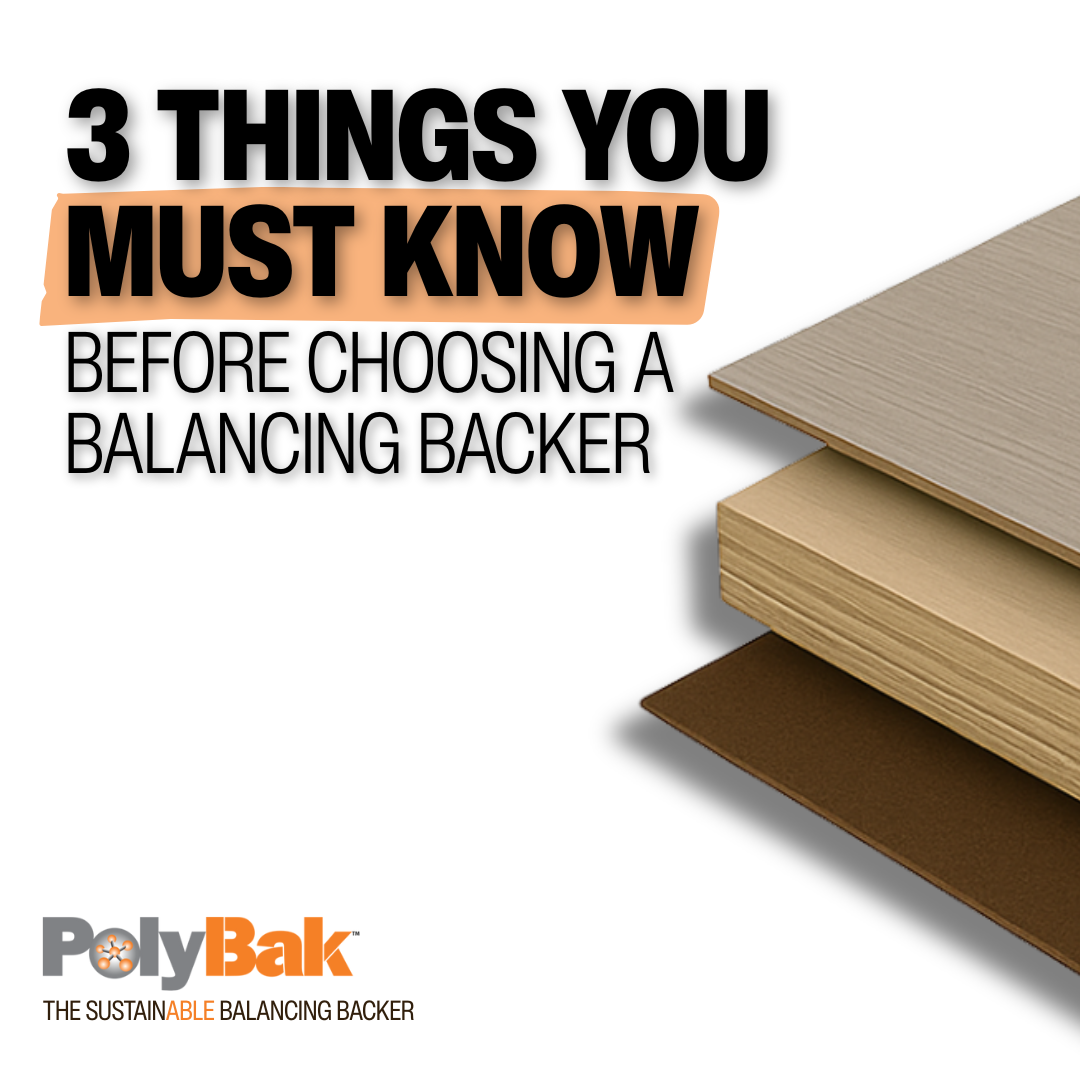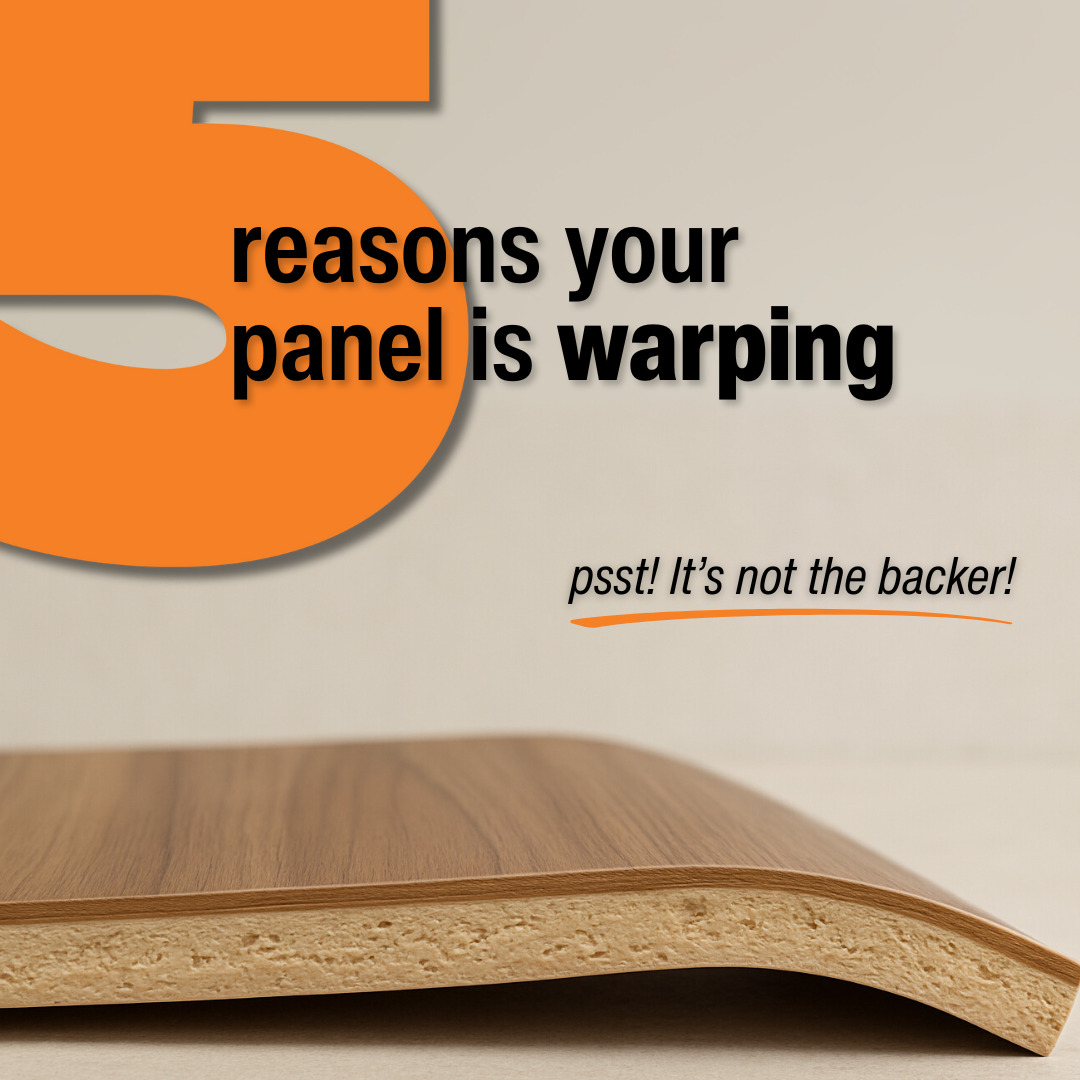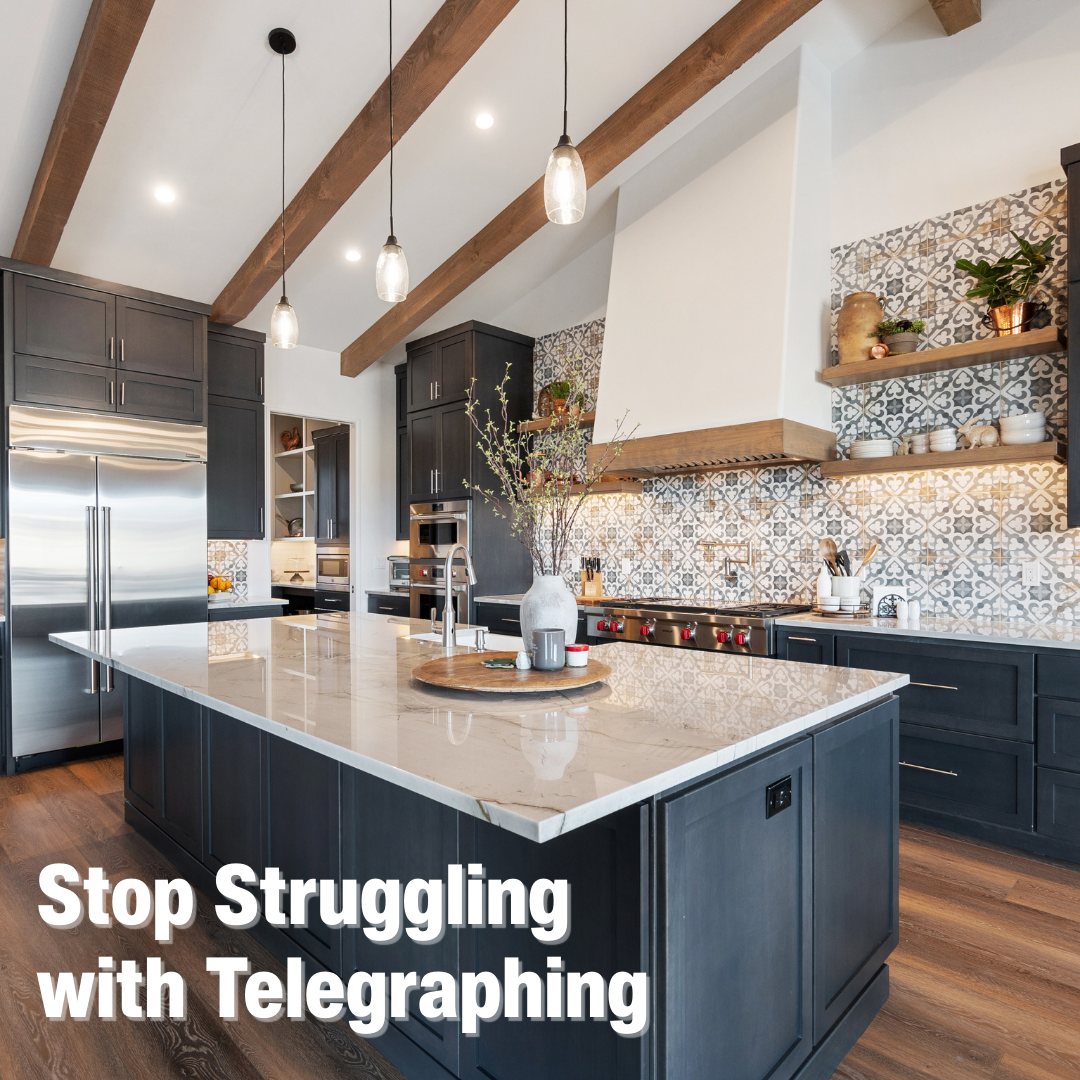
Gluing with PolyBak FAQ’s
We took some time to sit down with our technical sales engineer, Rich Rivera, and ask him some of the common questions we receive related to gluing PolyBak.

What is a Balancing Backer?
PolyBak is most widely recognized as a balancing backer. When assembling a decorative panel, there are three main parts: the decorative face, the substrate in the middle, and a balancing backer on the bottom. When each of these three components is present, your panel is considered balanced.

Balancing Backer Specification Checklist
No two projects are the same—which means you can’t rely on just any backer when making your selection. The difference between a panel that maintains structural stability throughout its lifetime and one that fails prematurely often comes down to the specifications of the balancing backer. Understanding these details ensures your panels perform as intended, meet certification requirements, and stand the test of time. Here are the key specifications every builder, fabricator, and designer should know before choosing a backer.

6 Myths About Balancing Backers
Here at Richwood Industries, we think about balancing backers all the time. (Yes, we admit it, we might be in the minority.) For much of the industry, balancing backers are just a necessary tool that nobody wants to give too much thought to. They’re not pretty like decorative laminates, and they’re usually hidden from sight. That’s the perfect recipe for being overlooked or misunderstood.
But that’s why we’re here: to bust the myths about balancing backers and bring your laminated panels back into… well, balance.
Here are 6 myths—and the truths behind them:

3 Things you Must Know When Choosing a Balancing Backer
When it comes to producing high-quality panels for work surfaces and furniture, the balancing backer you select can make a significant difference between a product that lasts and one that falls apart prematurely. Because of the role it plays in ensuring the structural stability of your panels, don’t make the mistake of making it an afterthought! Here are three key questions to ask before you select your model.

5 Reasons Your Panel Might be Warping
You chose the right balancing backer, yet, after laying up your panels, you see that some of your panels have warped. Can you still get a warped panel, even with the right materials? Unfortunately yes. Here are some common reasons for warping and what you can do to prevent it.

Stop Struggling with Telegraphing
In the plywood and laminate world, telegraphing is the visible (and sometimes tactile) transfer of substrate irregularities - voids, patches, grain raise, sanding ridges, or glue lines - through the overlay (HPL, TFL, foil, veneer, paint, etc.). It can appear as faint lines, ripples, or localized highs/lows that you can feel. Because of the problems associated with telegraphing, it’s important to follow best practices during and before manufacturing has begun. Here are some steps you can take to prevent telegraphing.
